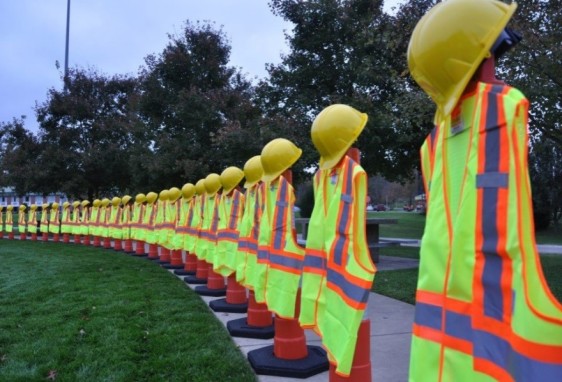What I learned at the ATSSA mid-year meeting

“An outdated MUTCD standard, and OSHA facts to consider.”
At the ATSSA mid-year meeting in August, I found out that 10 State DOTs are taking positive steps to combat distracted drivers, and ultimately, to improve Flagger safety. I thought – why are they wanting to improve Flagger safety? Don’t we have enough standards for traffic engineers to rely on to keep our Flaggers safe?
This compelled me to do some research, and I now know the reasons why the State DOTs are taking these proactive, positive steps.
The first reason is obvious – work zone crashes, involving distracted drivers, are at record highs, and the number of distracted drivers, is steadily increasing. It makes sense to me that if distracted drivers are not looking at the road ahead, then they don’t see the advanced warning signs or our Flaggers.
For the second reason, I dug deep into the hundreds of pages of the MUTCD. In Section 6D.01 Worker Safety Considerations, I found only one standard that applies to Flagger safety –“Flaggers are required to wear high-visibility safety apparel”. Like the moment you hear someone say, “Yup, that vest didn’t protect him”, immediately after an accident, you suddenly realize the serious dangers Flaggers are facing every day. It’s not meant to be funny, but it’s true. That’s why State DOTs are looking at creating new standards to improve Flagger safety.
Constantly improving safety standards is critically important, because as the current Standards become obsolete or outdated due to changing safety considerations, the OSHA General Duty Clause may kick in.
I did some research into the OSHA General Duty Clause and here are some facts to consider when using the current standards in the MUTCD. And, it’s also another reason why State DOTs are looking into developing new Standards.
- The General Duty Clause is used only where there is no standard that applies to the particular hazard.
- Employers can be cited for violation of the General Duty Clauseif a recognized hazard exists in their workplace and the employer does not take reasonable steps to prevent or abate the hazard.
- Interpretation of OSHA’s General Duty Clause and the elements necessary to prove a violation can be found at https://www.osha.gov/laws-regs/standardinterpretations/2003-12-18-1
AFADs support ATSSA’s National Strategy on Highway Safety, in working Towards Zero Deaths, by removing Flaggers from a hazardous work place. My hope is that the standards continue to be reviewed and critiqued so that they represent the realities of road safety (or lack thereof) out there today.
If you wish to continue the conversation, please comment below.
Peter Vieveen
Founder & Chairman
